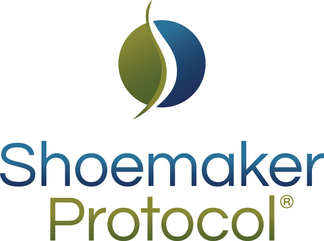Week of May 8, 2023

1/ The No-Amylose Diet and the Protocol, and weight loss
QUESTION: Do I need to be on the no amylose diet while taking cholestyramine?
ANSWER: No. The only people for whom I use the no amylose people are those using medications in attempt to lower leptin, MMP-9 and PAI-1.
Having said that, many patients feel a lot better on the no-amylose diet, as without high glycemic index foods, and thereby bringing extra insulin into their bloodstream, patients avoid the slings and arrows of insulin, a hormone well known pro-inflammatory.
If you feel better on this diet and want to stay on it, that is fine, too I have advocated its use to help in weight loss since 1977.
I am always interested to see a new diet come along that simply follows the concepts of no-amylose (South Beach, Paleo; the list is long).
The Forbidden Foods on the no-amylose. Diet are:
- Roots & tubers including white and sweet potatoes, beets, peanuts, carrots, and other vegetables which grow under ground. Onions and garlic are permitted.
- Bananas (the only “forbidden fruit”)
- Wheat and wheat-based products, including bread, pasta cakes, crackers, cookies
- Cereal grains
- Rice
- Oats
- Barley
- Rye
- Foods with added sugar, sucrose, corn syrup, or maltodextrin
2/ Amylose diet, Welchol
QUESTION: Does a no-amylose diet need to be followed when taking Welchol?
ANSWER: No. The only time I use a no-amylose diet is when I am using either interventions with Actos (almost never anymore) or Omega 3 to either 1) lower leptin; 2) lower PAI-1; or 3) lower MMP-9. Once those tasks are completed there is no need to continue the no-amylose diet.
3. Mycotoxins and food
QUESTION: Are mycotoxins in food a concern?
ANSWER: There is a significant world literature looking at aflatoxins found in food creating illness in animals. There are exposure limits set by the FDA (which are quite high) for presence of aflatoxins in food stuffs. Animal feeds are routinely protected from fungal growth to prevent toxin contamination. I have not yet seen a patient with a persistent illness due to consumption of food. In one remarkable small study I found non-allergic volunteers willing to eat 4 giant jars of Skippy crunchy peanut butter in a two hour period (during this time they watched YoungFrankenstein and danced to Putting on the Ritz). There was no change in inflammatory parameters before and after said consumption and no changes in blood results in the next two days. Fortunately, the patients did not suffer bowel perforation from this gross consumption of peanut butter.
The basic understanding when dealing with CIRS is that the molds on or in food are different than the mold, bacteria, and biotoxins found in water damaged buildings.
Furthermore, the “mold,” bacteria and biotoxins found in buildings make you sick, but the types and levels of mold found in food, do not.
Also, a distinction needs to be made between mold-related food allergies and CIRS. Mold on food will only make you sick if you have a mold allergy. Those with CIRS will not be made worse by consuming moldy foods.
It’s also helpful to understand that there are different types of molds, some naturally occurring in foods, and some are even considered good (as in blue cheese and certain cheese processes). If you have CIRS, you can eat cheese if your digestive system is up to it – blue cheese included.
Molds can also develop during growing, harvest, or in warehouses. Manufacturers try to control the warehouse mold growth.
The bottom line: moldy building environments, which include strains of bacteria and biotoxins, are at the crux of biotoxin/mold illness (CIRS). The types and levels of mold found in or on your food – while not always ideal – do not trigger CIRS/mold illness.
4. Allergy versus innate response
QUESTION: I have CIRS but I wonder if I have a second problem of mold allergy?
ANSWER: The two conditions are mutually exclusive and have two entirely different testing and diagnosis systems. What we can surmise from the CIRS testing process is that innate immune responses are involved in CIRS with genetic susceptibility, and low IgE and high levels of C4a and/or TGF beta-1 are typically found. For
those with allergy, high IgE and presence of excessive antibodies but without innate immune activation, is typically seen.
Testing for allergens to molds from blood test is problematic in that to my knowledge, none of the antigens used for mold allergy testing has ever been validated to be monoclonal. Any antigen detection system that is polyclonal will not be reliable in mold testing. Skin testing is the most commonly used approached diagnosis of allergy and high IgE levels. I have heard from multiple sources that IgE-based allergy therapies miss allergy from IgG-based illnesses routinely.